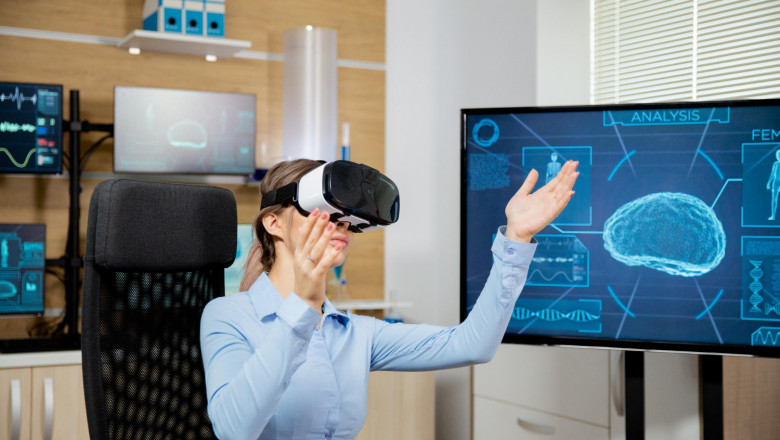views
In recent years, augmented reality (AR) has become a valuable tool across multiple sectors, with its potential in healthcare particularly notable. As the demand for skilled healthcare professionals rises, training methods have evolved to incorporate immersive technologies that enhance learning and skill-building. AR is at the forefront of this shift, transforming traditional medical training into a more interactive and practical experience. By overlaying digital information onto real-world scenarios, AR in healthcare helps bridge the gap between theory and practice, offering learners a hands-on, visually rich training environment.
From medical students to seasoned professionals, AR tools enable healthcare workers to explore complex anatomy, practice delicate surgical techniques, and simulate challenging scenarios without the need for physical patients. This method not only enhances learning but also improves patient outcomes, as practitioners are better prepared and equipped with experience from virtual simulations. AR’s role in medical training is set to redefine the standards of healthcare education, creating a future where professionals are more knowledgeable, confident, and capable.
Key Benefits of AR in Healthcare Training
- Enhanced Visualization of Anatomy: AR provides detailed, 3D visualizations of human anatomy, allowing students and professionals to explore structures in a more immersive, interactive way.
- Practical Skill Development: With AR simulations, trainees can practice procedures and techniques in a risk-free environment, reinforcing skills and boosting their confidence before treating real patients.
- Instant Feedback and Guidance: Many AR applications offer real-time feedback, helping learners correct errors and refine their approach during training exercises.
Expanding Access to Medical Training
- Remote Learning Opportunities: AR-powered training can be accessed from anywhere, broadening learning opportunities for students and professionals who may not be able to attend traditional, in-person training sessions.
- Global Collaboration and Knowledge Sharing: AR enables collaborative training experiences, connecting healthcare professionals across the globe to share techniques, insights, and best practices.
- Equal Access to Quality Training: By standardizing training through AR, even those in remote or under-resourced areas can gain access to high-quality medical education, helping to bridge healthcare disparities.
Applications of AR in Specialized Medical Fields
- Surgical Training and Simulation: AR allows surgeons to simulate complex operations with real-time guidance, improving precision and technique without the need for cadavers or animal models.
- Emergency Response Preparedness: In emergency medicine, AR simulations train professionals on rapid-response skills, helping them handle high-pressure situations with greater proficiency.
- Dental and Orthopedic Practice: AR provides students and specialists in dentistry and orthopedics with detailed guides on procedures, enhancing their accuracy and reducing error rates.
Addressing Challenges and Future Developments
- High Costs of Implementation: While AR is valuable, the expense of developing and maintaining AR platforms can be prohibitive. Efforts to reduce costs and increase accessibility are essential for widespread adoption.
- Technical Proficiency and Training Requirements: Integrating AR requires training both educators and students to effectively use these new tools, ensuring that technology is adopted efficiently.
- Data Privacy and Security: As AR applications may collect sensitive data during training, maintaining high standards of data security is critical to protect user privacy.
Conclusion
AR in healthcare is paving the way for a more effective, immersive approach to medical training. By offering hands-on, realistic simulations and fostering global collaboration, AR is reshaping how healthcare professionals learn and prepare for real-world scenarios. With continued innovation, AR promises to enhance skill development, promote access to quality training, and ultimately improve patient care standards across the medical field.






















Comments
0 comment